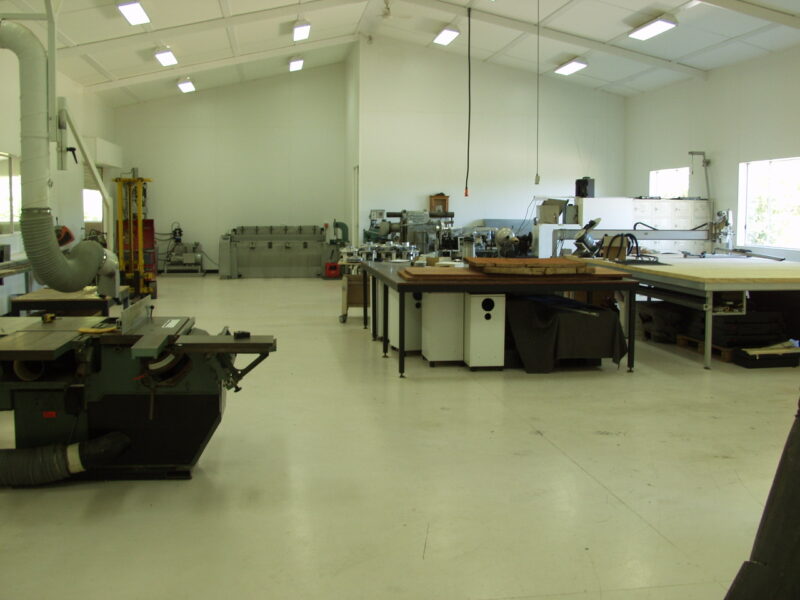What first attracted you to a career in conservation? How did you get started?
RH: My career began in an apprenticeship as a cabinet maker, hand making reproduction furniture. Completing my apprenticeship by topping the state in Victoria with my marks, I was released early from the indenture and moved to London shortly after, with the intention of pursuing an historical study of furniture design, 1980. Very quickly I realised the need for conservation of furniture because much of the detail I was looking for as a researcher had been restored away. Robin being Robin, I thought I could do better! For those who weren’t born then, at this point in time, conservation was only an emerging profession in paper and paintings, certainly not furniture and other wood-based decorative arts. To pursue studies in conservation in my field, I had to develop my own course of study, researching from documentary evidence (this included the dyslexic Robin moving to France for six months to learn French, full time, to enable me to research the treasure trove of French treatises) the materials and techniques, the degradation processes that worked on them and then the science to mitigate this. My goal was clear. As a skilled maker of fine furniture, I knew there was no reason to restore period pieces to make them shiny and looking like new; if that was the desired result, get new items. My goal was to conserve the unique heritage and the history attached. What started for me as a 21 year old, continues to this day; without realising it, I had begun ‘life-long learning’.
What does a typical work day look like at the moment?
RH: Today, although I do occasionally treat works, I am primarily involved in the design, development and production of much of the specialist technology used by my colleagues in the fields of paintings, paper and textiles, and to a lesser degree objects conservation. Here again, I saw a need, firstly for myself and then for other conservators to provide the specialist tools and equipment used in conservation. My goal here is to improve the minimally invasive techniques we use.
So, what does a typical day look like? I’m working in the large workshop I built myself, doing a treatment on a work, through to CNC machining of components, manufacturing in composites, using a number of specialist welding techniques, or developing electronics for a product of the RH range of equipment. In normal times, non-pandemic, I am overseas, promoting, supporting, servicing the RH brand. Virtually all of my products are exported from my workshop out of Flinders, Victoria, to the world—the US, Europe and, increasingly, Asia.

Interior of the main area RH workshop. RH own
Do you have a favourite object or collection that you have worked on?
RH: Favourite collection, I’d probably have to say that of the NGV. It was the reason I returned to Australia after five and a half years living in London.
Can you think of an experience that has changed your perspective on conservation or how you approach your work?
RH: I am constantly evolving my methods and means, but always to the original goals I had as that young furniture maker setting off to build a new career. The RH range of equipment is only available from me; I don’t supply to on-sellers because I value the connection with my profession, my colleagues. Firstly, as a conservator, I can assist a client to get the most from a product I supply and, in turn, I can see ways to improve the products I supply, so it’s very much a two-way deal.

Welding bay/metal fab area. RH own
Has working in conservation taught you any skills that you use in other areas of your everyday life? Or do you bring everyday skills into the conservation lab?
RH: Here again, this is a two-way flow—the need to keep evolving, and finding new and better ways to do what we do. As a person, I’m a dreamer. I can imagine something, but I am also a creator, so I find inventive ways to create these dreams. Case in point, my most recent development: the temperature-sensing non-contact IR heat tool, for use in place of the traditional heated spatula, of which I produce an extensive range.

Conservation lab area, including some historic electrical switchboards after treatment. RH own
What is the one thing you wish more people knew about conservation?
RH: I once described conservation to a person as a technique to maintain and keep the ‘data clean’; not trying to improve it, but to maintain it in all its integrity.

A recent treatment to a piece of degraded archoligcal maritime ships timber, after vac- uum consolidation and installation on the custom display mount. RH own
Anything else you might like to reflect on and share?
RH: We identify as conservators, but this would have to be the most diverse profession on earth! This is a strength, and we need to appreciate it and use this diversity to further strengthen and develop. We are, as a profession, awesome!